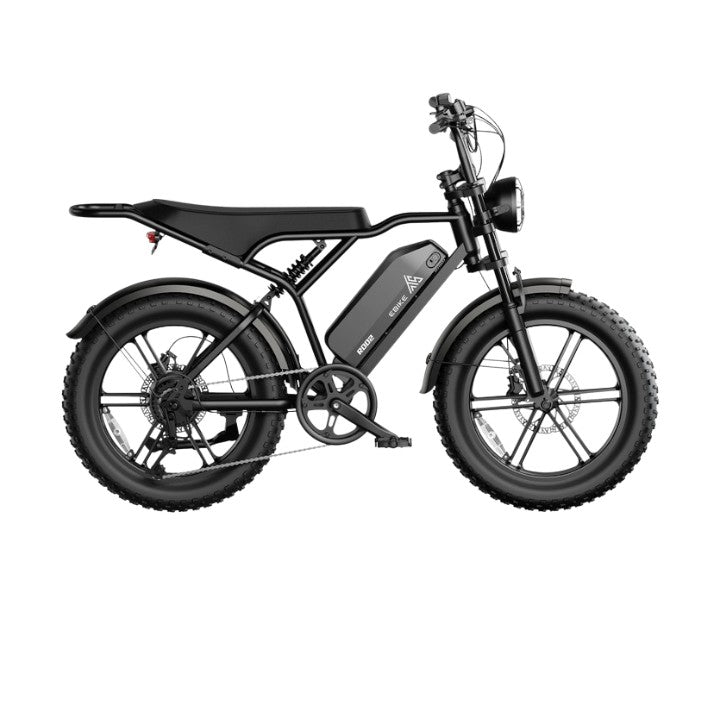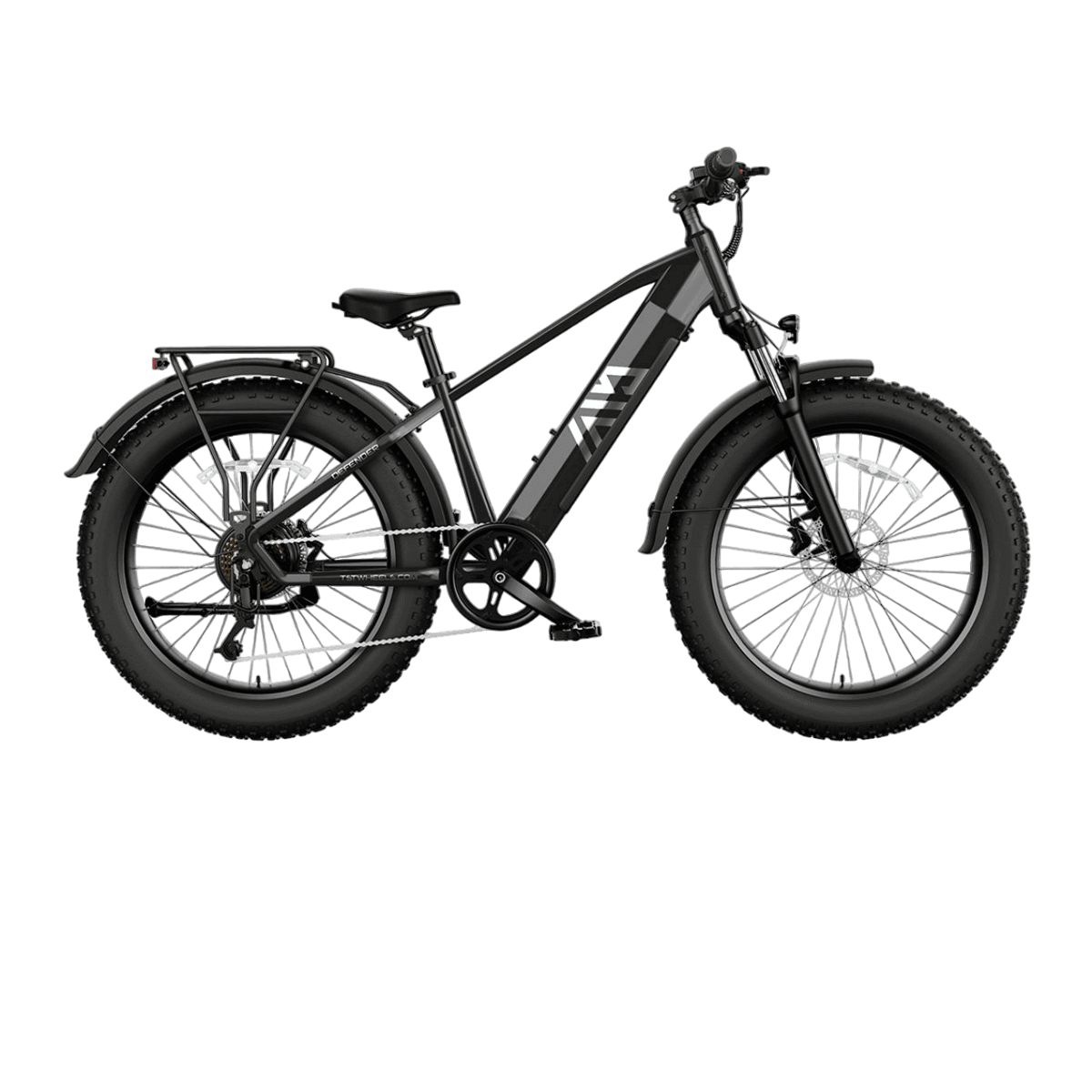Preventing knee pain while cycling involves proper bike fit, strengthening supporting muscles, maintaining correct pedaling technique, and pacing your training to avoid overuse. Using ergonomic e-bikes like TST EBike’s 26-inch and 27-inch models, combined with these strategies, helps riders enjoy pain-free cycling across varied terrains and distances.
What Bike Fit Adjustments Help Prevent Knee Pain?
Proper bike fit is crucial to avoid knee strain. Adjust saddle height so that your knee has a slight bend (25–35 degrees) at the bottom of the pedal stroke-too low causes anterior knee pain, too high causes posterior pain. Position the saddle so your front knee aligns with the ball of your foot when pedals are horizontal. For clip-in pedals, ensure cleats are correctly aligned to prevent rotational stress on the knees. Professional bike fitting is highly recommended.
How Does Warming Up Before Riding Reduce Knee Discomfort?
Warming up increases blood flow and loosens muscles and joints, reducing injury risk. Effective warm-ups include 5–10 minutes of easy pedaling at low resistance, dynamic stretches targeting quads, hamstrings, calves, and hips, and foam rolling tight muscle groups. This prepares the knees for cycling demands and helps prevent pain during and after rides.
Which Muscle Strengthening Exercises Support Knee Health?
Strengthening muscles around the knee improves joint stability and reduces stress. Focus on glutes, quadriceps, hamstrings, and hip stabilizers with exercises like glute bridges, clamshells, wall sits, squats, step-ups, lunges, hamstring curls, and calf raises. Incorporating core strengthening also supports proper cycling posture and knee alignment.
Muscle Strengthening Exercise Chart
| Muscle Group | Recommended Exercises | Benefits |
|---|---|---|
| Glutes | Glute bridges, clamshells | Stabilizes hips and knees |
| Quadriceps | Wall sits, squats | Supports knee extension |
| Hamstrings | Hamstring curls, lunges | Balances quad strength |
| Calves | Calf raises | Enhances pedal control |
How Can Pedaling Technique and Cadence Prevent Knee Pain?
Maintain a smooth, circular pedal stroke with knees tracking straight, avoiding inward or outward wobble. Avoid locking knees at the bottom of the stroke. Aim for a cadence of 80–100 RPM to distribute force evenly and reduce repetitive stress. Using appropriate gears prevents excessive resistance that strains the knees.
Why Is Avoiding Overtraining Important for Knee Health?
Sudden increases in cycling intensity or mileage can cause overuse injuries. Follow the 10% rule by increasing weekly training volume or intensity by no more than 10%. Incorporate rest days to allow muscles and joints to recover. Listen to your body and reduce activity if pain persists to prevent worsening injuries.
Which TST EBike Models Support Knee-Friendly Cycling?
TST eBike models like the Defender 26 and Cruiser offer knee-friendly cycling by providing smooth, responsive pedal-assist systems that reduce joint strain. Their adjustable power settings allow riders to customize assistance levels, minimizing knee stress during rides. These models feature ergonomic designs and comfortable seating positions that promote proper posture, further protecting knees. Ideal for riders with knee sensitivities, TST’s bikes combine performance and comfort to support longer, pain-free cycling sessions.
- 26-inch TST EBike Model: Features fat tires and a sturdy frame for rough terrains like snow and sand, offering stability and comfort that reduce joint stress.
- 27-inch TST EBike Model: Designed for commuting and mountain biking with ergonomic design and adjustable pedal assist levels, enabling riders to tailor effort and protect knees.
Both models provide smooth power delivery and adjustable settings to accommodate riders managing knee pain.
TST EBike Knee-Friendly Model Chart
| Feature | 26-inch Model | 27-inch Model |
|---|---|---|
| Terrain Suitability | Rough terrains (snow, sand) | Commuting, mountain biking |
| Pedal Assist Levels | Multiple, adjustable | Multiple, adjustable |
| Tire Type | Fat tires | Mountain tires |
| Frame Comfort | Stable, ergonomic | Agile, ergonomic |
Buying Tips
To prevent knee pain while cycling, consider:
- Choose ergonomic e-bikes: TST EBike’s 26-inch and 27-inch models offer adjustable assist and comfortable geometry.
- Get a professional bike fit: Proper saddle and cleat alignment are key.
- Invest in clipless pedals: They promote even force distribution.
- Incorporate strengthening exercises: Support knee stability.
- Monitor cadence and technique: Maintain smooth pedaling at 80–100 RPM.
- Avoid sudden training increases: Follow gradual progression and rest.
Why not enjoy cycling? At this time of year, riding under the bright sun helps with physical exercise and boosts your body's production of vitamin D. If everything is set up right, cycling can be a source of endless fun and a health boost. However, cycling might also bring some minor issues unexpectedly: Ouch! Why is my knee suddenly hurting?
Don't worry! The key is to identify which of these is the cause of your cycling knee pain and make a change.Read on to boost your knee knowledge and banish needling pain.
(Disclaimer: At TST Ebikes, we want you to enjoy every ride to the fullest. This article offers general information and tips on preventing knee pain while cycling but isn't a replacement for professional medical advice. If you have ongoing knee pain or other issues while riding, please reach out to a healthcare provider for a tailored diagnosis and treatment plan.)
Four Main Areas of Knee Pain for Cyclists
Cyclists often experience knee pain in four key areas: anterior (front), posterior (back), medial/lateral (inner/outer sides), and lateral knee pain due to iliotibial band syndrome (ITBS). Each type has distinct causes and requires specific prevention strategies.
The knee is a complex joint, and identifying the source of knee pain during cycling is crucial. Different areas of pain often signal different issues:
Front Knee Pain (Around the Patella)
Front knee pain, or anterior knee pain, is commonly caused by a low saddle height, excessive quadriceps use, or tight hip flexors. These factors increase pressure on the patella, leading to discomfort.
Front knee pain usually occurs around the patella (kneecap) and is common among cyclists, often referred to as "runner's knee." This pain is more likely to occur when you increase the intensity of your rides or after a break in winter. It is typically caused by inflammation of the soft tissues and ligaments around the patella, such as patellar compression syndrome.
This situation can occur if the knee experiences excessive pressure during pedaling, causing increased pressure between the patella and the femur, leading to pain. To alleviate this pain, make sure your bike seat height is appropriate to avoid excessive knee bending. Strengthening the inner quadriceps (Vastus Medialis Oblique) and relaxing the outer muscles can also help reduce the pain.
Back Knee Pain (Behind the Knee)
Pain behind the knee often results from a saddle that's too high or too far back, causing overextension during pedaling. This can strain the hamstrings and lead to issues like Baker's cysts.
Pain behind the knee is far less common, and much more straightforward. It’s almost always due to over-extending the knee. A saddle that’s too high or too far back, although these are just as likely to cause pain further up the hamstrings.
Persistent pain behind the knee should be looked at medically to exclude a Baker’s Cyst, a harmless bulging of synovial fluid into the space behind the knee.
Inner and Outer Knee Pain (Sides of the Knee)
Pain on the inner side of the knee may stem from swollen tendons, while outer knee pain is often linked to iliotibial band (ITB) compression. Both can be influenced by improper bike fit and muscle imbalances.
Pain on the inner or outer sides of the knee is often related to improper pedal adjustment. This type of pain usually occurs when using new shoes or changing pedals, which can lead to incorrect pedal positioning, causing the knee to rotate excessively or experience uneven pressure.
Checking the pedal settings to ensure they are aligned with your riding position can effectively alleviate this pain. Regularly inspect pedal wear and maintain their good condition to prevent discomfort.
Iliotibial Band Syndrome (ITBS)
ITBS causes lateral knee pain due to friction between the IT band and the femur. Contributing factors include a high saddle, improper cleat alignment, and weak hip muscles. Addressing bike fit and strengthening exercises can help prevent ITBS.
ITBS causes pain on the outer knee due to tightness in the iliotibial band. This often happens with knee movement and can be linked to weak glutes or poor pedal positioning.
To ease ITBS, rest, ice the area, use anti-inflammatory meds, and strengthen your glutes with stretching.
How to Prevent Knee Pain
Preventing knee pain involves proper bike fit, gradual training progression, maintaining good posture, strengthening muscles, warming up, and allowing adequate recovery time.
Understanding the various manifestations and causes of knee pain helps in preventing it. After all, prevention is often easier and more effective than treatment.
Adjust Your Bike Properly
Ensure your saddle height allows a slight knee bend at the bottom of the pedal stroke. Proper saddle position and cleat alignment are crucial to avoid undue stress on the knees.
Seat Height: Set your seat so that your knee is slightly bent when the pedal is at its lowest point. If the seat is too high, it can cause pain in the front of your knee, while a seat that's too low may lead to discomfort in the back. Regularly check and adjust to keep comfortable.
Seat Position: Position your seat so your knee aligns with the pedal when it's horizontal. If the seat is too far forward, your knee will press too much at the front. If it's too far back, you'll feel pressure at the back. Adjust as needed to reduce knee discomfort.
Increase Training Gradually
Avoid sudden increases in mileage or intensity. Gradually building up your training allows muscles and joints to adapt, reducing the risk of overuse injuries.
Progressive Increase: When increasing cycling distance or intensity, follow the principle of gradual progression. The weekly increase in distance or time should not exceed 10%. This allows your body to gradually adapt to the new training load and reduces knee pressure due to sudden intensity increases. Regularly monitor and adjust training intensity to avoid overuse.
Interval Training: When increasing training volume, include some interval training. This method helps with recovery and can reduce knee fatigue.
Maintain Proper Riding Posture
A neutral spine, relaxed shoulders, and engaged core help distribute forces evenly, minimizing knee strain. Proper posture also enhances overall cycling efficiency.
Knee Alignment: Keep your knees aligned with your pedals, ensuring they stay directly above your toes. Avoid letting your knees rotate inward or outward excessively. Proper alignment minimizes joint pressure and reduces the risk of knee pain. Regularly check your posture during rides to prevent unnecessary knee stress.
Avoid Large Gearing: The choice of gearing directly impacts knee pressure. Using overly large gears requires excessive force with each pedal stroke, which increases knee burden. Opt for a moderate gear ratio that makes cycling easier and avoids high-load stress on the knees. Proper gear selection improves cycling efficiency while protecting your knees.
Strengthen Core and Leg Muscles
Incorporate exercises targeting the glutes, hamstrings, and core to support knee function. Strong supporting muscles reduce the load on the knees during cycling.
Quadriceps (Vastus Medialis Oblique): Strengthen your quadriceps to support knee stability. Try straight leg raises by lying on your back and lifting one leg, holding it briefly. Do wall sits by sliding down a wall until your knees form a 90-degree angle, and hold. These exercises boost muscle strength and enhance knee support.
Glute Muscles: Strong glute muscles (such as the gluteus medius) are essential for stabilizing the pelvis and knees. Exercises like bridges and side leg raises help improve stability while cycling. Bridges involve lying on the ground and lifting the hips, holding for a few seconds and gradually increasing difficulty. Side leg raises involve lying on the side and lifting one leg. Strengthening glute muscles helps reduce pressure on the knees during cycling.
Core Muscles: Core strength is crucial for maintaining overall stability. Strengthening the abdominal and back muscles can help alleviate leg and knee burden. Common core exercises include planks and Russian twists. Planks involve holding a straight body position on the ground and gradually increasing the time. Russian twists involve sitting on the ground with a weight, twisting side to side. Strong core muscles help maintain a good riding posture and reduce knee pressure.
Warm-Up and Stretch
Begin rides with a light warm-up to increase blood flow. Post-ride stretching, especially of the hip flexors and IT band, helps maintain flexibility and prevent tightness.
Pre-Ride Warm-Up: Start with a light warm-up to prepare your body. Try easy cycling and dynamic stretches like leg swings and high knees. This helps improve blood flow and flexibility, making your muscles and joints ready for the ride and reducing the risk of knee pain.
Post-Ride Stretching: After cycling, do static stretches to ease muscle tension and reduce knee pressure. Focus on your quadriceps, hamstrings, and glutes. Hold each stretch for 30 seconds to a minute, gradually going deeper. This helps with muscle recovery and alleviates knee discomfort.
Rest and Recovery
Incorporate rest days and active recovery sessions to allow muscles and joints to heal. Adequate recovery prevents overuse injuries and promotes long-term performance gains.
Allow Sufficient Rest: Giving your body adequate recovery time after cycling is crucial in preventing knee pain. Schedule 1-2 rest days per week to allow the body to recover. Avoid consecutive days of high-intensity cycling; sufficient rest prevents overuse and injury. During rest periods, engage in low-intensity activities like walking or light stretching to keep active without adding stress to the knees.
Cold Therapy and Massage: Using ice packs after cycling reduces muscle fatigue and inflammation. Apply ice for 15-20 minutes to help decrease muscle swelling and pain. Additionally, appropriate massage can help relax tight muscles and improve circulation, speeding up the recovery process. Combining massage with cold therapy helps alleviate muscle fatigue and reduce knee discomfort.
Conclusion
Cycling brings not only changing scenery but also health and joy. To make each ride enjoyable, it's essential to focus on knee comfort. With simple prevention measures and adjustments, you can minimize knee pain effectively and enjoy a smoother, more pleasant cycling experience. Take good care of your knees and savor every moment on your bike!








Leave a comment
All comments are moderated before being published.
This site is protected by hCaptcha and the hCaptcha Privacy Policy and Terms of Service apply.